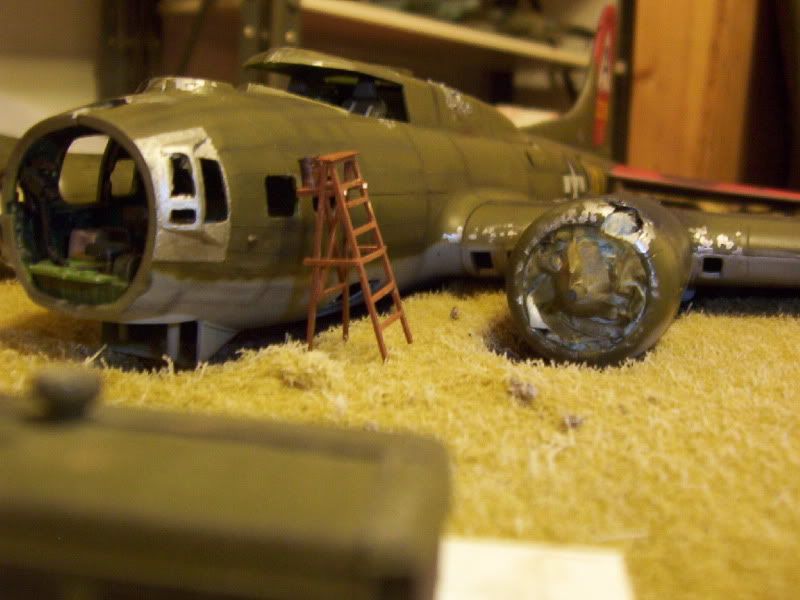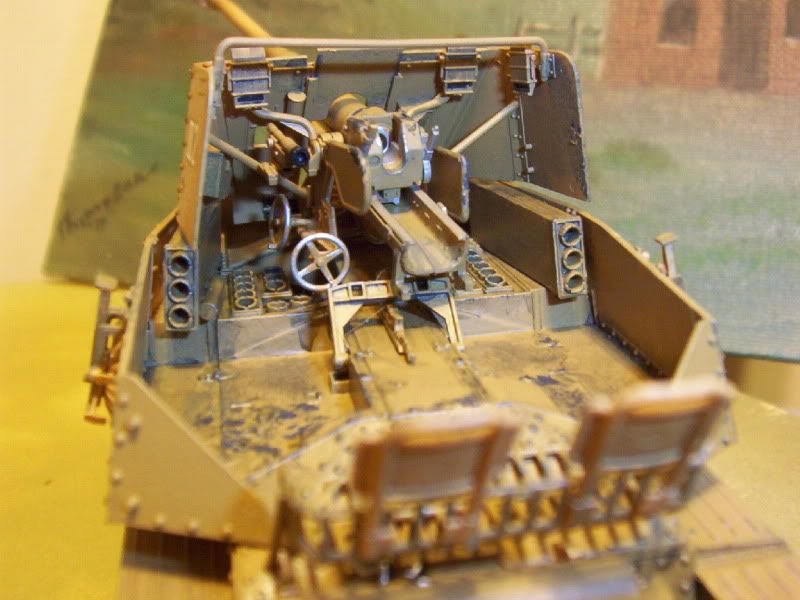I use pastels for soot/gunpowder residue..
For chipping, I generally use rubber cement masking. I first paint the model with whatever color I want for the undercoat that shows through, silver, aluminum, steel, primer, earlier finish coler, whatever... In this case, aluminum..
After that paint dries, I take the rubber cement and, using a stabbing/stippling motion with the applicator brush, apply it where I want the paint chipped...
After the rubber cement dries, paint as usual.. Then when the color-coat is dry, I rub off the rubber cement, reaveling the base material under it...
Here's the result on my B-17:

And my Marder, showing the "original" Panzergrau under the Dunkelgelb:

